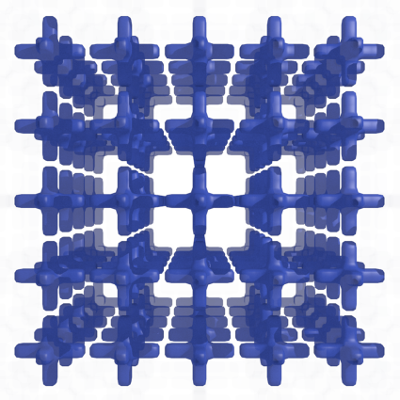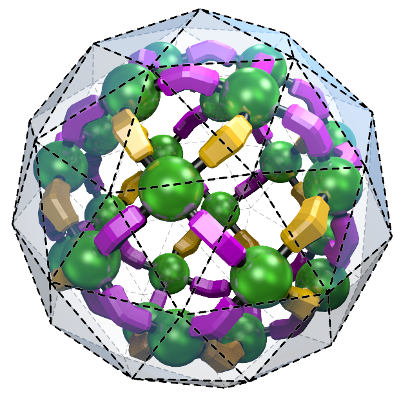Research at the Hypothetical Materials Lab
Overview: Our group designs hypothetical materials to help address energy and environmental challenges. We are interested in creating sophisticated nanostructures; potentially as complex (and useful) as molecular machines found in Nature. Our strategy is to computationally design and study new materials and then work work with our experimental collaborators to synthesize those materials in the lab. We are active software developers, and we build new computational tools to address problems nobody has tackled before.
The Plastics of the 21st Century
To get a sense our research, this presentation by Prof. Wilmer concisely explains how metal-organic frameworks (MOFs) will revolutionize the way the world stores, separates, and transports gases. MOFs are one of several classes of materials that our research group focuses on.
New Tools for Materials Discovery
Prof. Wilmer discusses our latest venture into designing new tools for modeling large-scale hypothetical molecular systems.
High Density Energy Storage Using Self-Assembled Materials
This movie, from Prof. Wilmer’s research at Northwestern, captures the spirit of the research we do here at Pitt!
Electronic Nose
An electronic nose (e-nose) is an analytical device designed for detecting and identifying odors or volatile compounds through an array of chemical sensors (MOFs) coupled with machine learning algorithms. By mimicking the human olfactory system, e-noses analyze the unique chemical signatures of gaseous mixtures for qualitative and quantitative assessments. We aim to develop a comprehensive sensor array capable of detecting all gas combinations and determining their composition, creating a true artificial analogue of the human nose. These technologies have broad market potential in fields such as medical diagnostics, food quality control, environmental monitoring, and industrial safety.
Crystal Engineering / 3D Polymers
The ability to engineer the properties of crystals (rather than discover them through trial-and-error) is an open challenge in materials science. Certain classes of materials, such as metal-organic frameworks (MOFs) or covalent-organic frameworks (COFs), show promise for their ability to be rationally designed. MOFs and COFs self-assemble from modular building blocks, just like polymers, but whereas traditional polymers grow as linear chains and result in amorphous materials, MOFs and COFs grow in three dimensions and become highly ordered crystalline solids.
Molecular Nanostructures
The precursors to molecular machines are static molecular nanostructures. Whether by DNA origami, or inorganic supramolecular chemistry, other groups have demonstrated that it is possible to build intricate, atomically precise nanostructures in many different sizes and shapes. These structures can be built as storage vessels, to contain and deliver drugs, or as traps, to capture unwanted pollutants (or even viruses).


